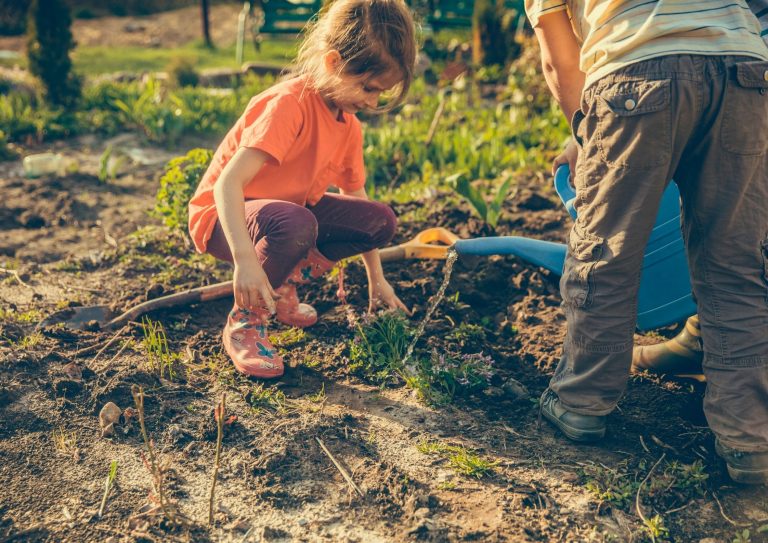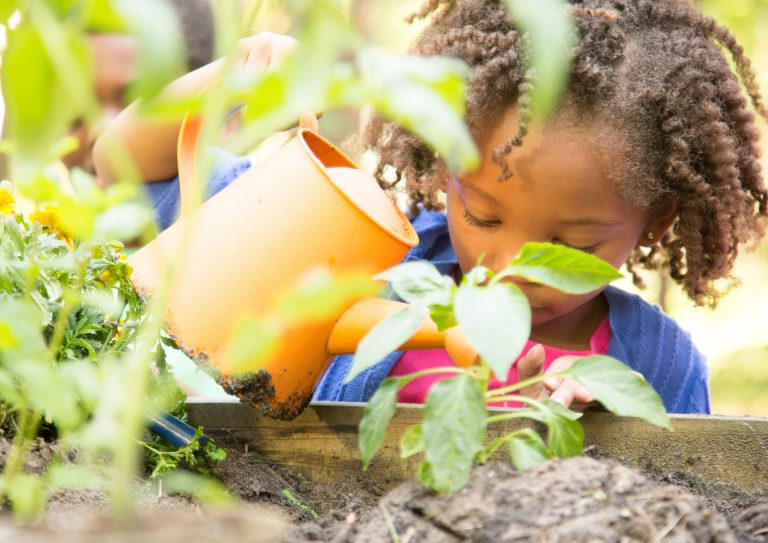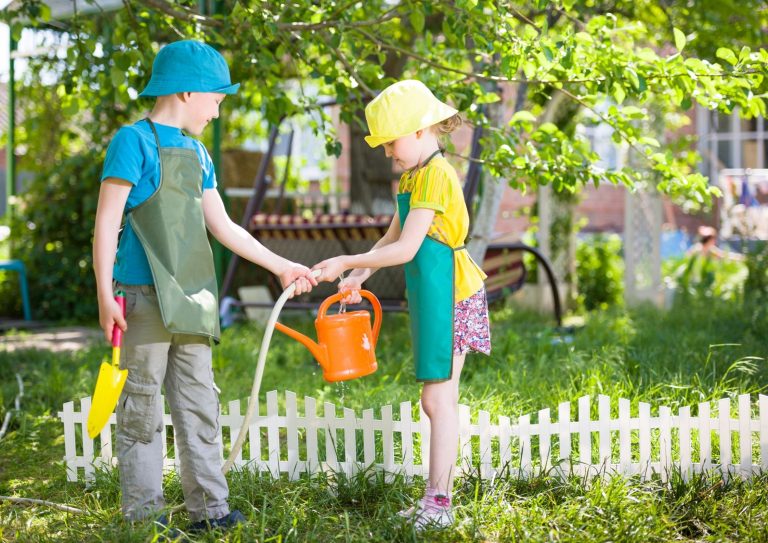A children’s sensory garden is ideal for stimulating any child’s six senses. Children like to touch everything around them. Plus, they also love to smell things, so creating a sensory garden for them is an excellent idea.
A sensory garden is a deliberately designed space to encourage the senses. It is a lovely technique to stimulate sensations and concentrate on touch and aroma. Children can imagine all of the sounds, tastes, smells, images, and sensations in the garden by closing their eyes.
There is an astonishing array of plants in the sensory garden, ranging from forms, sizes, colors, fragrances, and textures. Plants provide unlimited alternatives for constructing a sensory garden to stimulate all of the senses in children.
In this article, you’ll learn about how to design a unique garden setting where you and your kids may benefit through vision, scent, taste, feel and sound. Read on to learn more!

The Children’s Sensory Garden
Here are some of the best ways to create a children’s sensory garden:
01: Choose Appropriate Plant Pots and Containers
The first factor to look into is how to make the garden widely accessible so that kids may interact with it in various ways. Raised beds, table-top pots, and even suspended baskets or roof gardens elevate plants from the floor to the waist for youngsters, encouraging them to get up close to plants. Consider building walkways to help your kids explore difficult-to-reach areas.
02: Decide On a Theme
You can opt to focus on sensual plants and pick things that will please all of the senses, or you can narrow your concentration to one aspect of sense, such as building a colorful garden that is most aesthetically pleasing.
03: Select Plants that Arouse the Senses
Always, besides choosing plants for their sensory appeal, seek out kinds that are well suited to normal growth circumstances such as sunshine and water so that your garden is as simple to maintain as possible.
04: Adorn the Garden with Eye-Catching Ornaments
Children like sticking their hands in the dirt. They use visual appeal with vividly colored signs and sculptures. Interactive elements such as an unplanted dig site may also be enjoyable.
05: Exercise Extreme Caution At All Times
Sensory gardens motivate children to feel, touch, and sometimes smell the plants; they avoid choosing dangerous vegetation or plants with leaves or thorns that might hurt or pierce the skin. You can gather all the plant foods in one location to ensure that it is evident which ones may be ready for immediate use.
06: Seize the Opportunity to Explore
When you set up the garden, keep in mind that the purpose is discovery. Sensory garden species are easy to pick up and prod more than those in other gardens, but this is part of the process. While you should set some boundaries, make sure your children feel free to interact with the plants and unique elements in your garden. That is an essential part of learning.


How to Choose Sensory Plants for a Children’s Garden
Not all plants can be sensory plants in children’s gardens. So, choose what would be ideal for the kids’ garden. Here are the factors to consider when selecting sensory plants for children’s gardens.
The Smell of a Garden
The most enjoyable fragrance is that of the sensory garden! Smell generates emotions, recalls memories, and has several advantages for morale and memory. For example, one of the best scents ever is lavender.
You may choose from various smells, including flowers, marigolds, fruit trees, artichokes, and many more. There are sweet-smelling flowers, like roses and lilies.
Plants that Stimulate the Senses for Visual Stimulation
Plants of varied hues can assist children in learning more about color awareness. Tomatoes, for example, are brilliant red. Sunflowers and other plants Rainbow chard and kale are visually stimulating vegetables for children.
Plants that Provide Tactile Sensation
In the garden, there are several textures to be felt. It is a plus if you locate one that smells lovely when you touch it, such as lavender or herbs.
When you feel a rough, spongy plant, it gives you a delightfully fuzzy and velvety touch. Plants such as wrinkled kale, tomato vines, celery, ginger, broccoli, and melon skin provide excellent tactile stimulation.
Plants that Stimulate Hearing
Consider the sound of bamboo canes snapping together in the breeze in the garden.
At maturity, the crunching of discarded leaves is a satisfying sound. Birds, bees, and other insects make a variety of noises.
Plants that dry out in the garden, such as bean shells and grains, are excellent examples of hearing stimulators.
Plants That Stimulate the Taste
There are many sweet fruits and vegetables in the garden. Nothing rivals the sensation of a ripe tomato bursting in your mouth. Other fruits that are both pleasant and healthful are kiwi fruit and watermelon. There are some bitter flavors as well, such as eggplant and herbs.
Sensory Garden for Special Needs
Setting aside time to garden with children with disabilities is a highly gratifying experience. Building a garden and caring for flowers and vegetables is a kind of therapy for children with special needs; it teaches them the skills they need to appreciate all of the benefits of being outdoors.
Sensory gardens for kids with special needs help develop motor abilities, creativity, social skills, and self-confidence. Gardening also relieves stress and assists youngsters in dealing with worry and frustration.
When selecting a sensory garden for special needs kids, always pay attention to the following.
- Accessibility of the garden.
- Make room for walkers and other mobility aids.
- Make table-high beds for youngsters in wheelchairs to readily access plants.
- Make pathways and chairs as accessible as possible.
Consider plants that suit your growing zone, just like you would in any garden. Native species are the most effective. Also, always prioritize safety. Some plants have thorns, while others are poisonous. Children are naturally curious, and you should be keen to ensure that the garden is suitably safe.


Final Words
Sensory gardens enable parents and schools to create an environment that encourages kids to have outdoor learning activities and excite their senses. Remember that kids learn best via hands-on experiences, and children’s sensory gardens give them just that.
Sensory plants for children’s gardens are vital to any home or institution dealing with kids. So, use the advice in this article to design a safe, appealing garden that children will enjoy.
Related Posts
-
How to Create a Children's Sensory Garden
Gardens are, by their very nature, a wonderfully sensory experience. Even the simplest…
-
How to Get Started with an Outdoor Sensory Garden
An outdoor sensory garden helps in engaging and stimulating the five basic senses of taste,…
-
How To Have Fun With An Outdoor Sensory Garden
An outdoor sensory garden is a special type of garden that combines beautiful flowers, scented…



